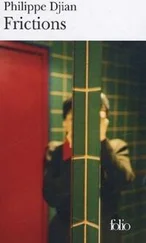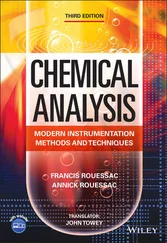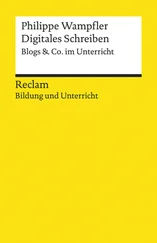1 Cover
2 Title page Spoken Language Linguistics Set coordinated by Philippe Martin Volume 1
3 Copyright First published 2021 in Great Britain and the United States by ISTE Ltd and John Wiley & Sons, Inc. Apart from any fair dealing for the purposes of research or private study, or criticism or review, as permitted under the Copyright, Designs and Patents Act 1988, this publication may only be reproduced, stored or transmitted, in any form or by any means, with the prior permission in writing of the publishers, or in the case of reprographic reproduction in accordance with the terms and licenses issued by the CLA. Enquiries concerning reproduction outside these terms should be sent to the publishers at the undermentioned address: ISTE Ltd 27-37 St George’s Road London SW19 4EU UK www.iste.co.uk John Wiley & Sons, Inc. 111 River Street Hoboken, NJ 07030 USA www.wiley.com © ISTE Ltd 2021 The rights of Philippe Martin to be identified as the author of this work have been asserted by him in accordance with the Copyright, Designs and Patents Act 1988. Library of Congress Control Number: 2020948552 British Library Cataloguing-in-Publication Data A CIP record for this book is available from the British Library ISBN 978-1-78630-319-6
4 Preface
5 1 Sound
1.1. Acoustic phonetics 1.2. Sound waves
1.3. In search of pure sound
1.4. Amplitude, frequency, duration and phase
1.5. Units of pure sound
1.6. Amplitude and intensity
1.7. Bels and decibels
1.8. Audibility threshold and pain threshold
1.9. Intensity and distance from the sound source
1.10. Pure sound and musical sound: the scale in Western music
1.11. Audiometry
1.12. Masking effect
1.13. Pure untraceable sound
1.14. Pure sound, complex sound
6 2 Sound Conservation
2.1. Phonautograph 2.2. Kymograph
2.3. Recording chain
2.4. Microphones and sound recording
2.5. Recording locations
2.6. Monitoring
2.7. Binary format and Nyquist-Shannon frequency
2.8. Choice of recording format
2.9. MP3, WMA and other encodings
7 3 Harmonic Analysis
3.1. Harmonic spectral analysis 3.2. Fourier series and Fourier transform
3.3. Fast Fourier transform
3.4. Sound snapshots
3.5. Time windows
3.6. Common windows
3.7. Filters
3.8. Wavelet analysis
8 4 The Production of Speech Sounds
4.1. Phonation modes 4.2. Vibration of the vocal folds
4.3. Jitter and shimmer
4.4. Friction noises
4.5. Explosion noises
4.6. Nasals
4.7. Mixed modes
4.8. Whisper
4.9. Source-filter model
9 5 Source-filter Model Analysis
5.1. Prony’s method – LPC 5.2. Which LPC settings should be chosen?
5.3. Linear prediction and Prony’s method: nasals
5.4. Synthesis and coding by linear prediction
10 6 Spectrograms
6.1. Production of spectrograms 6.2. Segmentation
6.3. How are the frequencies of formants measured?
6.4. Settings: recording
11 7 Fundamental Frequency and Intensity
7.1. Laryngeal cycle repetition 7.2. The fundamental frequency: a quasi-frequency
7.3. Laryngeal frequency and fundamental frequency
7.4. Temporal methods
7.5. Frequency (spectral) methods
7.6. Smoothing
7.7. Choosing a method to measure F0
7.8. Creaky voice
7.9. Intensity measurement
7.10. Prosodic annotation
7.11. Prosodic morphing
12 8 Articulatory Models
8.1. History 8.2. Single-tube model
8.3. Two-tube model
8.4. Three-tube model
8.5. N-tube model
13 Appendix
14 References
15 Index
16 End User License Agreement
1 Chapter 1 Figure 1.1. Definition of the sinusoid. For a color version of this figure, see ...
Figure 1.2. Representation of pure sound as a function of time. For a color vers...
Figure 1.3. Phase of pure sound
Figure 1.4. Time shift due to phase shift
Figure 1.5. Curves of equal intensity perceived versus Fletcher-Munson frequency...
Figure 1.6. Modification of the audibility threshold by the simultaneous masking...
Figure 1.7. Temporal mask effect (from (Haas 1972))
Figure 1.8. The tuning fork produces a damped sinusoidal sound variation
Figure 1.9. Example of a complex sound constituted by the sum of 3 pure sounds o...Figure 1.10. Example of a complex sound constituted by the sum of 3 pure sounds ...
2 Chapter 2Figure 2.1. Scott de Martinville’s phonautograph, Teylers Museum, Haarlem, The N...Figure 2.2. Spectrogram of the first known Clair de la Lune recording, showing t...Figure 2.3. Ludwig’s kymographs (source: Ghasemzadeh and Zafari 2011). For a col...Figure 2.4. Waveform and spectrogram of the first known recording of a tuning fo...Figure 2.5. Waveform of an [a] in the 1860 recording of Scott de Martinville. Fo...Figure 2.6. Graphical waveform calculation resulting from the addition of pure t...Figure 2.7. La Nature, No. 998, July 16, 1892. Apparatus of M. l’abbé Rousselot ...Figure 2.8. Analog magnetic recording chainFigure 2.9. Digital recording chain. For a color version of this figure, see www...Figure 2.10. Polar response curves of omnidirectional, bidirectional and unidire...Figure 2.11. A recording session with Chief Parakatêjê Krohôkrenhum (State of Pa...Figure 2.12. Aliasing. Insufficient sampling frequency misrepresents the signal....
3 Chapter 3Figure 3.1. Four realizations of [a] in stressed syllables of the same sentence ...Figure 3.2. Effect of the phase change of three harmonics on the waveform, resul...Figure 3.3. Diagram of the principle of harmonic analysis in Fourier seriesFigure 3.4. Correspondence between the temporal (left) and frequency (right) rep...Figure 3.5. Transformation of a sampled segment into a periodic signalFigure 3.6. Increase in frequency resolution with duration of the time windowFigure 3.7. Time sampling of pure sound through a rectangular windowFigure 3.8. Spectrum of pure sound at 1,500 Hz, 512 dots, 46 ms seen through dif...Figure 3.9. Time sampling of the speech signal through a Hann(ing) window. The s...Figure 3.10. Wavelet analysis window, 6 cycles at 3 different frequencies corres...Figure 3.11. Wavelet spectrogram, 5 cyclesFigure 3.12. Wavelet spectrogram, 10 cyclesFigure 3.13. Wavelet spectrogram, 15 cycles
4 Chapter 4Figure 4.1. Normal breathing cycle and during phonation. For a color version of ...Figure 4.2. Variation in buccal airflow [dm3/s], subglottic pressure [hPa] and F...Figure 4.3. Simplified diagram of the voice fold control systemFigure 4.4. Estimation of glottic waveforms obtained by electroglottography, mal...Figure 4.5. Glottic wave spectrum showing the decay of harmonic peaks from the f...Figure 4.6. Jitter and shimmer (vowel (a))Figure 4.7. Speech production model
5 Chapter 5Figure 5.1. Implicit model in LPC analysisFigure 5.2. Comparison of Prony spectra of the order of 12 with a window of 2 ms...
6 Chapter 6Figure 6.1. Overlapping analysis windowsFigure 6.2. Pure sound analyzed at 1,000 Hz, respectively, with a 25 ms rectangu...Figure 6.3. Narrowband (top left) and wideband (bottom left) spectrograms. To th...Figure 6.4. Locating silences in [efafanəvizaʒamɛləbarakyda] (phonetic transcrip...Figure 6.5. Locating silences in [ʃi:æbsIlu:tlırıfju:zıztʊgoʋʊaIʊtIloʋʊnætnaIi:t...Figure 6.6. Locating unvoiced fricatives [efafanəvizaʒamɛləbarakyda]Figure 6.7. Locating unvoiced fricatives [ʃi:æbsIlu:tlırıfju:zıstʊgoʋʊaIʊtIloʋʊn...Figure 6.8. Locating voiced fricatives [efafanəvizaʒamɛləbarakyda]Figure 6.
Читать дальше












